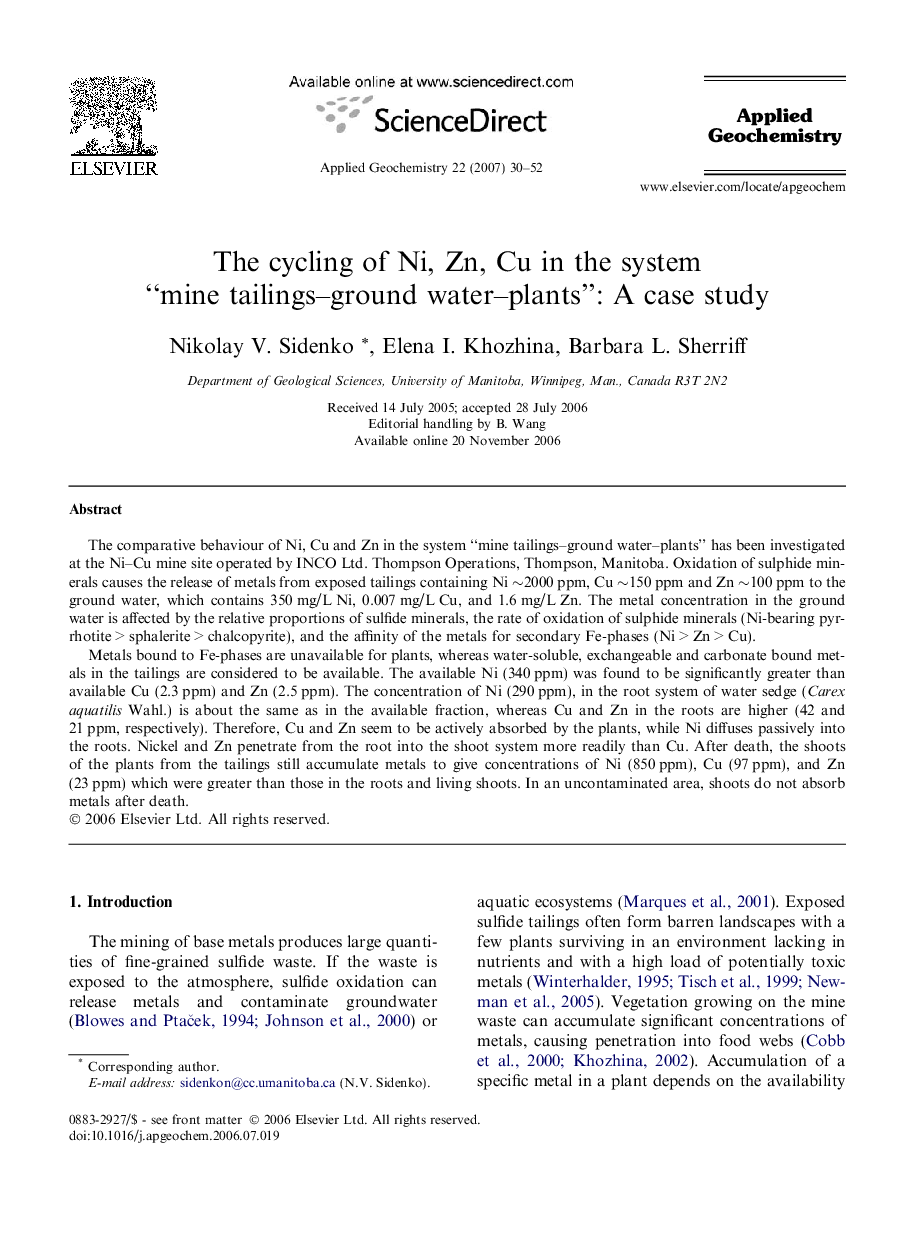| Article ID | Journal | Published Year | Pages | File Type |
|---|---|---|---|---|
| 4437859 | Applied Geochemistry | 2007 | 23 Pages |
The comparative behaviour of Ni, Cu and Zn in the system “mine tailings–ground water–plants” has been investigated at the Ni–Cu mine site operated by INCO Ltd. Thompson Operations, Thompson, Manitoba. Oxidation of sulphide minerals causes the release of metals from exposed tailings containing Ni ∼2000 ppm, Cu ∼150 ppm and Zn ∼100 ppm to the ground water, which contains 350 mg/L Ni, 0.007 mg/L Cu, and 1.6 mg/L Zn. The metal concentration in the ground water is affected by the relative proportions of sulfide minerals, the rate of oxidation of sulphide minerals (Ni-bearing pyrrhotite > sphalerite > chalcopyrite), and the affinity of the metals for secondary Fe-phases (Ni > Zn > Cu).Metals bound to Fe-phases are unavailable for plants, whereas water-soluble, exchangeable and carbonate bound metals in the tailings are considered to be available. The available Ni (340 ppm) was found to be significantly greater than available Cu (2.3 ppm) and Zn (2.5 ppm). The concentration of Ni (290 ppm), in the root system of water sedge (Carex aquatilis Wahl.) is about the same as in the available fraction, whereas Cu and Zn in the roots are higher (42 and 21 ppm, respectively). Therefore, Cu and Zn seem to be actively absorbed by the plants, while Ni diffuses passively into the roots. Nickel and Zn penetrate from the root into the shoot system more readily than Cu. After death, the shoots of the plants from the tailings still accumulate metals to give concentrations of Ni (850 ppm), Cu (97 ppm), and Zn (23 ppm) which were greater than those in the roots and living shoots. In an uncontaminated area, shoots do not absorb metals after death.
